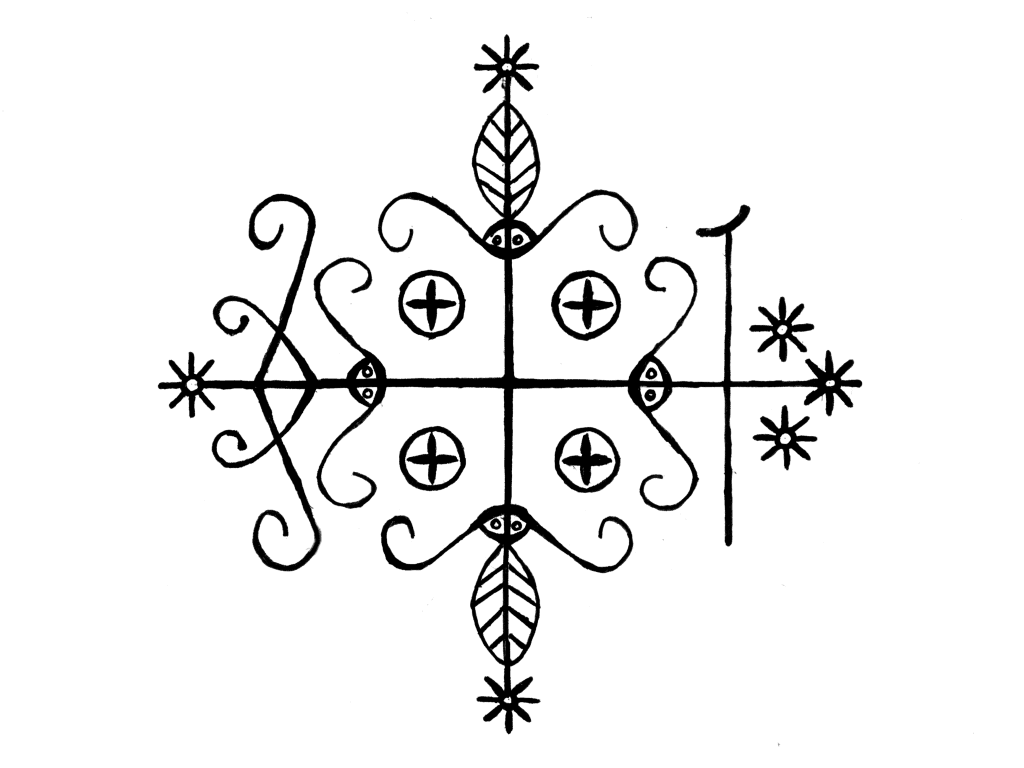Deeps > Representing Bois Caïman > Bois Caïman as “Religion”
By Lenny Lowe
Haitian Vodou was born at a gathering around a mapou tree. Boukman presided, a black pig was sacrificed, and a blood oath was sworn. At least, such is the story that is often told by both Haitians and non-Haitians, practitioners and opponents alike. To be sure, the complex set of practices, beliefs, affects, objects, and relationships that constitute what is named as “Vodou” can be traced to various African provenances. The experience of forced migration, the Middle Passage, and the brutal conditions of plantation slavery provided the context for a unique religious expression among the African slaves of colonial St. Domingue. The shared ritual lives of slaves and maroons prior to the Haitian Revolution may also rightly be called “Vodou.” Yet, the now mythical ceremony of Bois Caïman has come to serve, not just as a founding myth of Haitian culture, but also as the founding myth of Haitian “religion.” In the more than two centuries that have passed since slave insurgents gathered, both the nature of the event and its political and cultural significance have remained central to the narrative of Haiti and its people.
I do not use “religion” here to indicate a natural category or an essentially unique sphere of human activity. Rather, I understand “religion” as the product of a modern Enlightenment discourse of “civilization.” Still, the history of Haiti is also quintessentially modern history in which the idea of “religion” has come to signify an important part of cultural identity for many Haitians no less than Europeans or North Americans. Therefore, this page understands “religion” (and, consequently, Vodou) as discursively produced and maintained but also as a social fact with real effects. Any narrative of the development of Vodou in Haiti must take seriously the founding-myth of Bois Caïman, for there is perhaps no more significant single event that can account for the central yet ambivalent position of “Vodou” within Haitian cultural history.
The following pages trace the construction and stabilization of Vodou from the revolutionary moment inaugurated by Bwa Kayiman (1791), through the internal and external political struggles of the early republic (19th century), the US Occupation of Haiti (1915-1934) and its enduring legacy, up to the Protestant Evangelical “spiritual warfare” of the contemporary moment. Throughout, we have several questions that guide our narrative: Why have the events of Bois Caïman been understood as “religion”? How has that understanding influenced the construction of Vodou both by Haitians and non-Haitians? Finally, how have battles over Haitian religion and Haitian culture more broadly invoked Bois Caïman and to what effect?
Links below will take you to the four phases mentioned above. On each, you will find links to relevant scholarly articles, summaries of scholarly discussions, images, and links to the art, music, and documentary sources contained on other pages of this project.
Religion and Revolution (1791-1804)
Religion and the Republic (19th Century)
Occupation and the Occult (20th Century)
Curse or “Culture”? (21st Century)
How to cite this article: “Bois Caïman as ‘Religion’,” Written by Lenny J. Lowe (2014), Deeps, The Black Atlantic Blog, Duke University, http://sites.duke.edu/blackatlantic/ (accessed on (date)).






Wow, another article about Haiti and Vodou, how original and surprising …
I hope you’ll see my reply to you on the “Representing Bois Caiman” page.